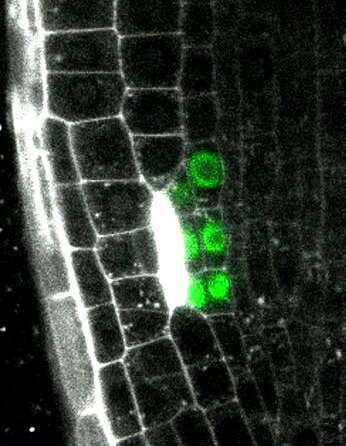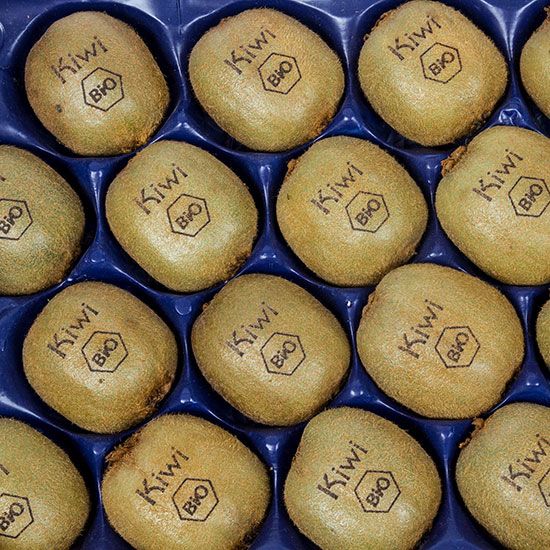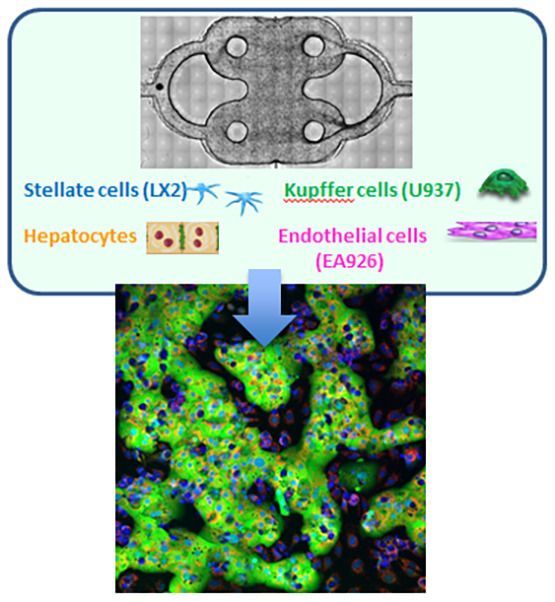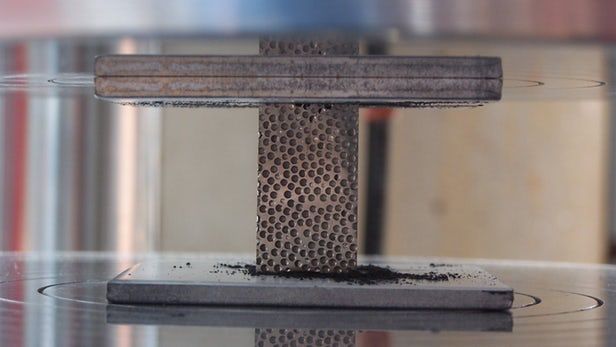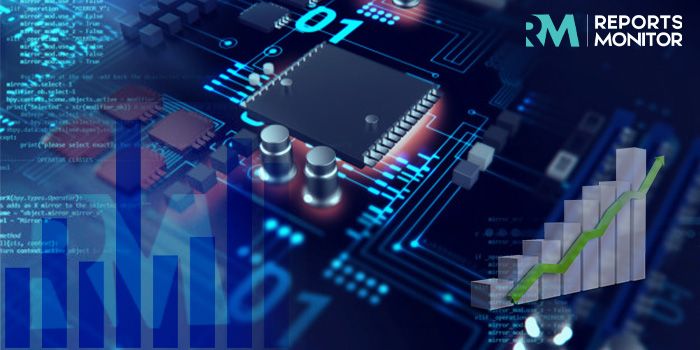Page 7826
May 22, 2019
Specialized plant cells regain stem-cell features to heal wounds
Posted by Quinn Sena in category: biotech/medical
If plants are injured, cells adjacent to the wound fill the gaps with their daughter cells. However, which cells divide to do the healing and how they manage to produce cells that match the cell type of the missing tissue has been unclear. Scientists from the Institute of Science and Technology Austria (IST Austria) have now shown that to correctly replace dead cells, neighbors to the inside of the wound re-activate their stem cell programs.
All plant organs—from the leaves to the root—regularly endure injuries to their tissue, whether due to mechanical forces, grazing animals, or other factors. While animals rely on specialized migrating cells for wound healing, plants, whose cells are immobile, had to evolve other mechanisms.
It has been known for almost a century that in plants, cells adjacent to the wound replace harmed tissue with new daughter cells. Yet, a completely new aspect of plant wound healing in the sensitive root tip has only recently been discovered: The research team including first authors Petra Marhava, former Ph.D. student at IST Austria, current Ph.D. student Lukas Hörmayer, and former IST postdoc Saiko Yoshida reports that injured or destroyed root cells are not simply replaced by a proliferation of healthy cells from the same cell type above and below to the wound. Instead, the cells adjacent to the inner side of the injury reactivate their stem cell programs to produce de novo cells of the correct type to replace missing neighbors. The researchers termed this newly discovered restorative cell division process “restorative patterning.”
Continue reading “Specialized plant cells regain stem-cell features to heal wounds” »
May 22, 2019
Say Goodbye to Food Labels: Your Produce Could Soon Be Laser-Imprinted
Posted by Quinn Sena in category: food
Food sticker labels could soon be a thing of the past. Brands, dates, origins, and even images could soon be laser-printed directly onto pieces of produce.
NIH-funded investigators are developing liver-on-a-chip devices to study liver function and disease modeling in order to accelerate testing and approval of new drugs.
May 22, 2019
Zero-Point Energy Makes Power Pervasive & Free
Posted by Quinn Sena in category: space travel
What would happen if energy, electricity, and power were pervasive and free? When a bum all the way up to an entire country would no longer have to worry about wars over oil, flights running out of fuel, or having to build a giant rocket to carry a giant tub of rocket fuel in order to get it to escape velocity and keep it going to Mars.
When you combine those two concepts: available anywhere at zero cost, you’ve got something more valuable than when man discovered fire.
Note that humankind didn’t invent fire. We discovered it. Because it already existed.
Continue reading “Zero-Point Energy Makes Power Pervasive & Free” »
May 22, 2019
Metal foams could provide lightweight radiation shielding
Posted by Quinn Sena in category: energy
Radiation generally comes under the heading of “things you want to stay away from,” so it’s no surprise that radiation shielding is a high priority in many industries. However, current shielding is bulky and heavy, so a North Carolina State University team is developing a new lightweight shielding based on foam metals that can block X-rays, gamma rays, and neutron radiation, as well as withstanding high-energy impact collisions.
May 22, 2019
Future Growth: Organs-on-chips Market New Revenue Sources, Latest Trends and 2025
Posted by Quinn Sena in categories: biotech/medical, business, computing
Global Organs-on-chips Market Size, Status and Forecast 2019–2025
The report provides insightful details – how clients enhance their basic leadership capacity within the worldwide Organs-on-chips Market business. Utilizing figures and flowcharts are brief in this report, the specialists represented to the analyzed information in a superior acceptable manner. This report identifies that rapidly changing market trends and competitive landscape with growth significant CAGR during Forecast. Along, with latest marketing factors those are essential to monitor market performance and crucial decisions for progress and profitability.
According to this study, the next Y-o-Y (year over year) Organs-on-chips market will register a XX% CAGR in terms of revenue, the Astonishing Growth market size will reach US$ XX million by 2025, from US$ XX million in 2019. In particular, this report presents the global market share (sales and revenue) of key companies in the Market New Research Study.
May 22, 2019
Can Miracle Material Stop Radiation?
Posted by Quinn Sena in categories: nuclear energy, particle physics
 Gamma radiation is the most penetrating and energetic form of nuclear radiation. To absorb half the incoming Gamma you need two and a half inches of concrete or almost half an inch of lead. So my eyebrows went up when I saw a press release for an organization called Radiation Shielding Technologies, or RST, selling protective clothing with this startling claim:
Gamma radiation is the most penetrating and energetic form of nuclear radiation. To absorb half the incoming Gamma you need two and a half inches of concrete or almost half an inch of lead. So my eyebrows went up when I saw a press release for an organization called Radiation Shielding Technologies, or RST, selling protective clothing with this startling claim:
“DemronTM not only protects against particle ionizing/nuclear radiation (such as Beta and Alpha), but does what NO OTHER full body radiation protection can do: shield against X-ray and low-energy Gamma emissions.”
You’ve read your last complimentary article this month. To read the full article, SUBSCRIBE NOW. If you’re already a subscriber, please sign in and and verify your subscription.
May 22, 2019
New way to activate stem cells to make hair grow
Posted by Quinn Sena in categories: biotech/medical, life extension
UCLA researchers have discovered a new way to activate the stem cells in the hair follicle to make hair grow. The research, led by scientists Heather Christofk and William Lowry, may lead to new drugs that could promote hair growth for people with baldness or alopecia, which is hair loss associated with such factors as hormonal imbalance, stress, aging or chemotherapy treatment.
The research was published in the journal Nature Cell Biology.
Hair follicle stem cells are long-lived cells in the hair follicle; they are present in the skin and produce hair throughout a person’s lifetime. They are “quiescent,” meaning they are normally inactive, but they quickly activate during a new hair cycle, which is when new hair growth occurs. The quiescence of hair follicle stem cells is regulated by many factors. In certain cases they fail to activate, which is what causes hair loss.
May 22, 2019
Tie2 activation promotes choriocapillary regeneration for alleviating neovascular age-related macular degeneration
Posted by Quinn Sena in categories: biotech/medical, life extension
Choriocapillary loss is a major cause of neovascular age-related macular degeneration (NV-AMD). Although vascular endothelial growth factor (VEGF) blockade for NV-AMD has shown beneficial outcomes, unmet medical needs for patients refractory or tachyphylactic to anti-VEGF therapy exist. In addition, the treatment could exacerbate choriocapillary rarefaction, necessitating advanced treatment for fundamental recovery from NV-AMD. In this study, Tie2 activation by angiopoietin-2–binding and Tie2-activating antibody (ABTAA) presents a therapeutic strategy for NV-AMD. Conditional Tie2 deletion impeded choriocapillary maintenance, rendering eyes susceptible to NV-AMD development. Moreover, in a NV-AMD mouse model, ABTAA not only suppressed choroidal neovascularization (CNV) and vascular leakage but also regenerated the choriocapillaris and relieved hypoxia. Conversely, VEGF blockade degenerated the choriocapillaris and exacerbated hypoxia, although it suppressed CNV and vascular leakage. Together, we establish that angiopoietin-Tie2 signaling is critical for choriocapillary maintenance and that ABTAA represents an alternative, combinative therapeutic strategy for NV-AMD by alleviating anti-VEGF adverse effects.
Neovascular age-related macular degeneration (NV-AMD) is a leading cause of irreversible vision loss among elderly persons in developed countries. NV-AMD is characterized by the formation of choroidal neovascularization (CNV), an ingrowth of abnormal blood vessels from the choroid through Bruch’s membrane into the sub-retinal pigment epithelium (RPE) or subretinal space. Throughout this ingrowth, abnormal leakages of fluids and bloods occur into the retina, causing vision distortion and loss of central vision (2, 3). To treat neovascular eye diseases including NV-AMD, anti–vascular endothelial growth factor A (VEGF) therapy has largely been used based on the fact that an excessive production of VEGF from hypoxic cells in the retino-choroidal complex is critical in the pathogenesis and features of neovascular eye diseases (3, 4).

